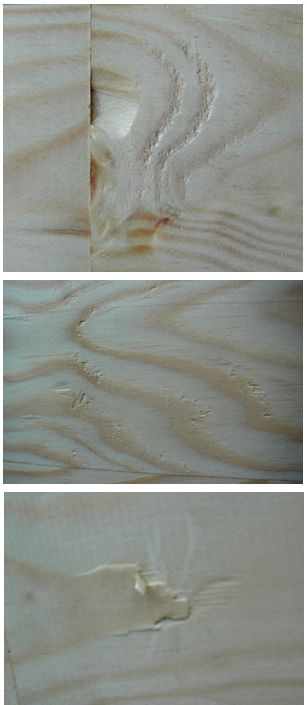Question
We are machining finger joint red pine into a 6 head moulding machine and we are experiencing substantial splitting and peeling. Heads number 1 and 3 are de-roughing the wood with helical cutters. The finishing is done with corrugated hydro heads. We have tried 12 and 20 degree angles without any success. Could the wood have been fractured during the blanking at the finger joint plant?

Forum Responses
(Sawing and Drying Forum)
From contributor J:
Check your moisture percentage. I've had similar problems with pine/fir being overdried, or having shake (harvested from a windy area creating internal stress in the material).
Check the MC whenever the defect occurs (not an hour or two later). Use a pin-type meter from a name brand company to make sure you get good readings. Measure both the surface, 1/4 deep and 1/2 deep. Oftentimes, the pine is dried by people that know how to dry studs, but not higher quality material. They do not know about equalizing. When drying is completed, the surface MC is often under 2% MC even though the average is 15% MC.